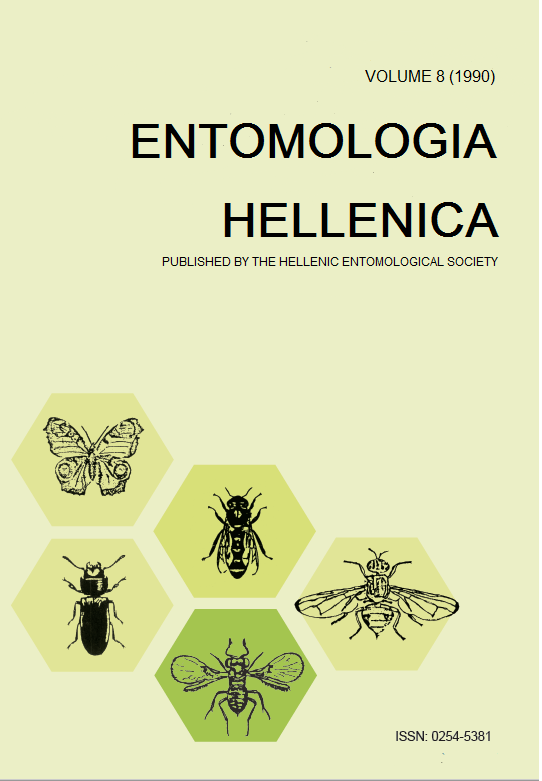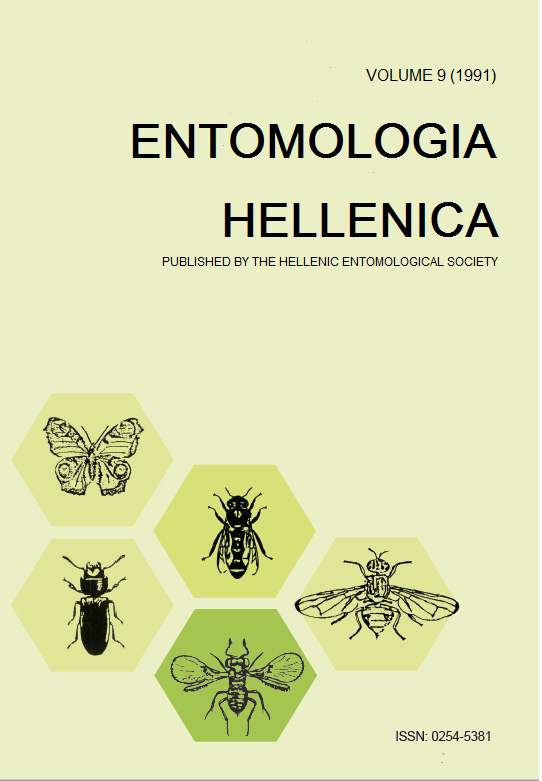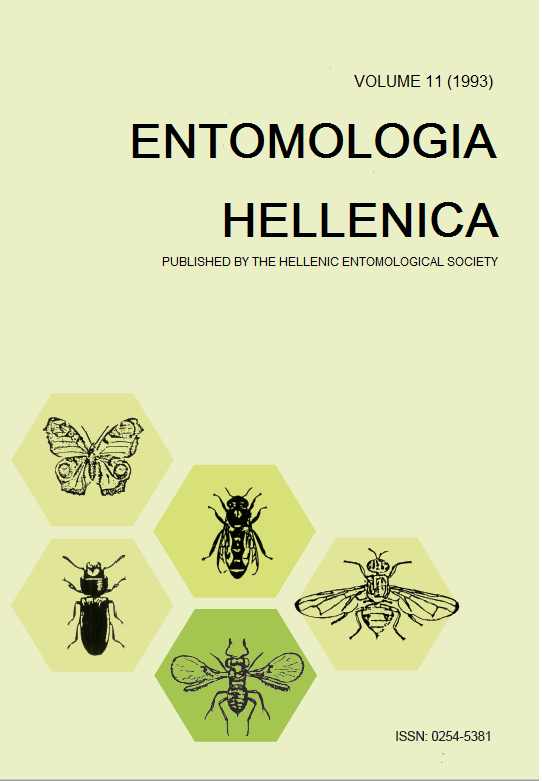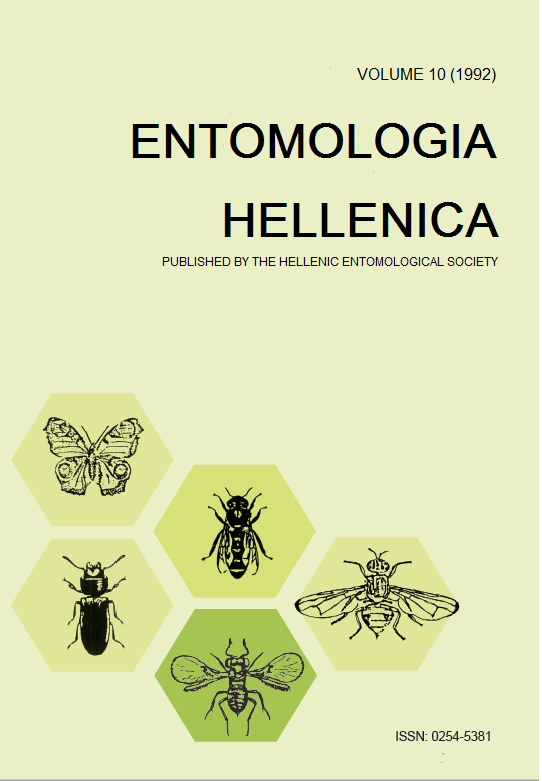Abstract
The green citrus aphid, Aphis citricola van der Goot, known also as spiraea aphid, Aphis spiraecola Patch, was first noticed in an orange grove, cv Washington Navel, in Korinthia southern Greece during spring 1986. It was collected from tender shoots as early as about mid March and was also found in large numbers in samples taken during April and May and in lesser numbers in October and November of the same year. It was also collected from clementine trees during May. During 1987 this species was also present in samples taken from another orange grove, cv Washington navel, located in the Co. Korinthia as well. It was found later in the season, in May, as compared with the previous year. That was due to the snow and the extremely cold weather that occurred during March, which resulted in the destruction of young growth and hence in the delay of the aphid appearance. A. citricola has been previously recorded in Greece on Matricaria chamomilla L., Crataegus pyracantha Pers. and Solanum tuberosum L., on Zinnia elegans.Jacq. and on Prunus armeniaca L. and Pimpinella anisum L. A. citricola is a small aphid with 1.2-2.2 min length and body yellowish green to apple green. Siphunculi and cauda are dark brown and the head is brown in apterac. It is very similar to Aphis pomi De Geer and is often confused with it in the literature, especially on Rosaceae. A. pomi has lateral tubercles on abdominal segments 2-4, rarely fewer than 14 hairs on cauda and length of the last rostral segment more than 130µm. A. citricola has no lateral tubercles on abdominal segments 2-4, usually fewer than 12 hairs on cauda, and last rostra] segment less than 120µm in length. One more difference concerns the shape of the cauda which is more elongate and visibly notched at base in A. citricola than in A. poini. A. citricola causes curling and distortion of the leaves, especially of those near apices of tender shoots of the host plants. This is very characteristic in certain citrus such as orange and clementine trees. It is a highly polyphagus species that occurs on hosts belonging to more than 20 families, including Amaranthaccae, Caprifoliaccae, Compositae, Euphorbiaccac, Rosaccae, Rubiaccae, Rutaceae, Urticaceae and Verbenaceac but is of particular importance on citrus. A. citricola is considered the most harmful aphid species for orange, mandarins and clementine trees in Italy and in other citrus growing countries of the Mediterranean basin. This species was known in North America at least since 1907 and was introduced to the Mediterranean region in about 1931. A. citricola appeared in citrus groves in Mediterranean countries almost 20 years ago, while it was first recorded in Israel in 1970 and became a major pest in citrus groves in 1973. It is a vector of citrus tristeza virus but its ability for transmitting this virus is much lower than that of Toxoptera citricidus (Kirkaldy). A. citricola may reproduce either anholocyclically or holocyclically. Anholocyclic reproduction occurs in many parts of the world and is considered as more frequent. Nevertheless, holocyclic reproduction also occurs, and in this case, the genus Spiraea of Rosaccae is the primary host, although oviposition may take place on the same citrus trees in Japan. The intrinsic rate of natural increase of the aphid attained its maximum at a constant temperature near 27°C. The numbers of A. citricola found in the samples from cv Washington navel were large and higher than those of Toxoptera aurantii (Boyer de Fonscolombe), when the latter species was present. With the assumption that such large numbers occur also in other areas of the country, A. citricola should be the dominant and most harmful aphid species on citrus in Greece, as this is the case in other Mediterranean countries.







